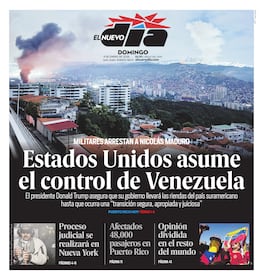The affordable housing sector in Puerto Rico is facing major availability challenges that can be identified as one of the main reasons why fewer and fewer young people want to live and reproduce in our country. This is a crucial issue that deserves urgent attention from the authorities.
---
Lee este artículo en español.
---
The latest sign of this serious problem was provided this week by a study conducted by professors at the University of Puerto Rico (UPR), commissioned by the Department of Housing, which revealed that the availability of subsidized housing on the island is only enough for 20% of the families who are income-eligible for it.
This includes public housing, the so-called Plan 8, and other housing assistance. The waiting list at the Housing Department is almost 28,000 families. For the 566,342 families who, according to the U.S. Census Bureau, qualify by income for subsidized housing, there are only 127,520 units available.
In September, the firm Estudios Técnicos released its Affordable Housing Study which indicates that, at this time, the average wage earner only generates 54% of the income required to obtain financing for a new home. The Builders Association indicates that building a home today costs 40% more than just in 2017, due to increases in material and labor costs, while in the last year the average price of a new home in the rose 25%, from $179,649 in the first quarter of 2023 to $224,484 this year, according to Estudios Técnicos.
It is clear, then, from the available information, that we have serious housing limitations in Puerto Rico, which is a problem of enormous consideration, especially for middle and lower class families who have great difficulty in obtaining their own roof over their heads.
Of course, it is a problem with multiple economic, social and other ramifications, which has no simple solution. Nevertheless, we believe it is essential that the issue be among the priorities of those who govern and those who aspire to do so. Experts on the subject have pointed out various routes that can lead us to alleviate the ordeal of so many compatriots who are unable, due to circumstances beyond their control, to obtain something as basic, as elementary, as a decent and safe roof over their heads.
Among the solutions to be studied, for example, is the rehabilitation of existing but abandoned housing, especially in urban centers, through the granting of tax and economic incentives. We believe that incentives for the development and construction of affordable or social interest housing is a good step to begin to untangle this knot that stifles a good part of our population.
Last month, this newspaper asked the four gubernatorial hopefuls about their proposals for the housing sector. The answers ranged from the construction of new units and the rehabilitation of urban centers, to the granting of incentives and the arrival of more federal funds. It is in the best interest of whoever wins to look at the proposals of the others, because there are positive elements in all of them.
One of the most serious problems we have as a society is the aging of the population, which has as its main causes the emigration of young people and the drop in the birth rate. Both phenomena can be directly linked to the difficulties in obtaining housing. Who would want to live, and have children, in a place where even having your own roof over your head is an odyssey?
Rebuilding Puerto Rico as a prosperous society in which more people want to live and grow begins with access to decent and affordable housing. There can’t be many things more important than this at this time to pay attention to and seek solutions for.
---
This content was translated from Spanish to English using artificial intelligence and was reviewed by an editor before being published.


